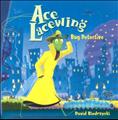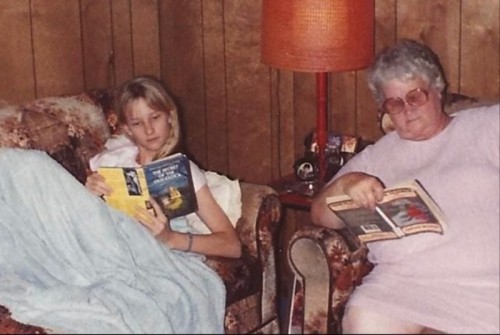We all need a little R & R—that is Reading & Relaxation—from time to time. But I’ve found that my reading choices lately are starting to lose variety. With busy schedules, I imagine I’m not alone in turning to books for entertainment…that time when I can curl up all cozy, turn off my brain, and escape into a good story.
But I remember a time when reading was where I learned about the world. It was how I encountered words I didn’t know, and then added them to my own vocabulary.
I went through an especially long MYSTERY phase as a child.
VALUABLE SKILLS
Looking back, I believe this helped me analyze and think about what I was reading. As a detective, I had to look for clues and pay attention to sequencing. It was necessary to read between the lines. If I wanted any chance of solving the mystery, I had to think about characters’ motives, make inferences from what they said and did, notice discrepancies or gaps, and crunch the clues to draw conclusions. That’s A LOT of critical thinking skills. But as a kid, I thought I was just reading a great book!
MY OWN WRITING
I’ve been working on my own version of a detective story. It’s a picture book involving Sarge, a German Shepherd, who feels a strong responsibility to watch out for his neighbors. When suspicious dog behavior is reported, he launches an investigation to get to the bottom of things. Quite surprised by what he finds, he learns you CAN teach an old dog new tricks.
To improve my story, I’m doing more “research,” which in this case means read and read and read mysteries for all ages. So I thought I’d pass along the treasures I’m finding.
READING LIST
Hank the Cowdog
 Written by former cowboy, John R. Erickson
Written by former cowboy, John R. Erickson
Interest Level: Grades 2-5, chapter book series
Plot Summary: Solving mysteries on a ranch
With almost 60 books, you’ve hit the jackpot if your 2nd-5th grader likes the first book: The Original Adventures of Hank the Cowdog. This slightly-paranoid dog takes his self-appointed role as Head of Ranch Security very seriously. But somehow, he always ends up on the wrong side of things and his owners, Loper and Sally Mae, just don’t understand all his hard work to serve and protect. But Hank doesn’t let that get to him: “Every dog in this world isn’t cut out for security work. It requires a keen mind, a thick skin, and a peculiar devotion to duty. I mean, you put in sixteen-eighteen hours a day. You’re on call day and night. Your life is on the line every time you go out on patrol…The very people you’re protecting won’t understand. They’ll blame you when things go wrong. But that’s the price of greatness, isn’t it?”
Ace Lacewing Bug Detective
 Written by David Biedrzycki
Written by David Biedrzycki
Interest Level: Grades 2-3, picture book
Plot Summary: Ace and his gal Xerces solve mysteries.
“Bad Bugs Are My Business” reads the sign over Ace’s office. With this Dick Tracy-style character, kids will unravel a mystery in under 2,000 words, while learning a lot about insects in the process.
Detective Little Boy Blue
 Written by Steve Metzger
Written by Steve Metzger
Interest Level: Grades K-3
Plot Summary: Detective Blue solves nursery rhyme mysteries.
Boys and girls alike will enjoy spotting all the nursery rhyme characters in this detective story illustrated by Ted Arnold in comic book fashion. And the ending will come as quite a surprise. You only thought you knew those well-loved characters…
What REALLY Happened to Humpty?
 Written by Joe Dumpty as told to Jeanie Franz Ransom
Written by Joe Dumpty as told to Jeanie Franz Ransom
Interest Level: Grades K-3
Plot Summary: Humpty’s brother, Joe, is sure that Humpty was pushed. And he’s on a mission to find out the truth.
This hard-boiled detective story weaves numerous nursery rhyme characters together in a mystery where everyone is a suspect. Find out the truth behind the cover-up rhyme we’ve all been told.
Piggins
 Written by Jane Yolen
Written by Jane Yolen
Interest Level: Grades K-3
Plot Summary: Piggins, the butler, is quite handy at more than just serving dinner. He saves the day many a time with his attention to detail and observation skills.
This English hero resembles Agatha Christie’s detectives more than the trench coat and fedora-wearing inspectors of the 1940s. All the detective work happens over a 2-3 page spread, so kids will really be challenged as they try to beat Piggins to the solution.
ONE GENRE, MANY STLYES
This was the extent of my library research this last weekend before the holidays. I’ll leave you with another link that explores mystery books for preschool through ninth grade. It supplies a wide variety of styles and interests within the genre. http://www.carolhurst.com/subjects/mysteries.html
That’s the beauty of mysteries. Every child can find their interest, whether it’s sports, horror, humor, horses, monsters, fantasy, science, cars, etc…
So encourage your child to try a mystery, and pick up one for yourself, too.



